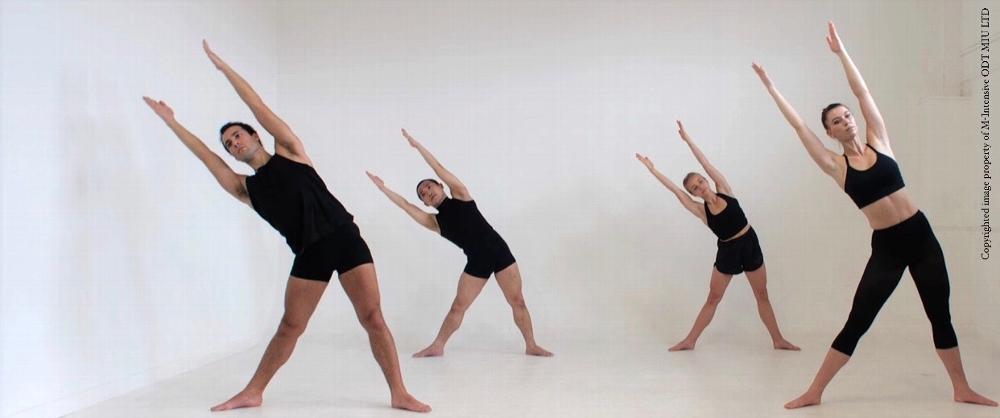Originally published in 2021, this article has been updated and rewritten by the author in April 2024.
Horton at M-Intensive University
Today, we're discussing one of MIU's core courses: Lester Horton's Fortifications*
By joining MIU, which is aimed at dance instructors and modern dance lovers looking for teacher training and resources in Horton and Graham Techniques, you will access 200+ detailed online Graham & Horton tutorials and classes. You will be able to study these 17 Horton's Fortifications, amongst other courses, at your own pace and from anywhere in the world. You can also access monthly Virtual Graham and Horton Experts workshops to broaden your teaching skills. MIU Members can join our live lessons or replay sessions 24/7.
Enrol in our Horton and Graham Certification Programme and become certified in 4 weeks, 6 months, or 12 months. Upon course completion, students will earn a Graham or Horton Techniques Teacher Certificate listed online as MIU Registered Horton or Graham Techniques Teachers.

The MIU Online CPD Masterclass Graham & Horton Ancestral Heritage
During a six-day virtual training course, you will discover how traditional forms of expression have influenced the Horton and Graham methods and contributed to creating essential shapes in contemporary dance techniques. After completing the course, you will be awarded a CPD certificate and free access to the replay for an additional six days.
Our teacher training will thoroughly prepare you to introduce your students to the Horton and Graham Techniques successfully. The Intensive can be joined live on Zoom or via replay sessions. Discounts are Available.
*The action of fortifying or the process of being strengthened.
What are the Fortifications?
As stated on our website, Lester Horton's technique, developed in the 1930s, is an excellent way to enhance and correct the body.
The technique developed by Lester Horton is based on a deep understanding of human anatomy. It focuses on correcting physical faults and preparing individuals for any dance form they wish to pursue. Horton created the Fortifications, which have a specific purpose behind each study, and the outcomes are truly remarkable.
You are gaining strength by improving your posture and body alignment. The fortifications will reinforce your entire body.
This article will discuss the purpose of each Fortification, introduce them in your class, and the challenges I have encountered in the past fifteen years.
Learning a new Fortification is always a moment to celebrate and feel proud of. Whether you are a Horton technique student or teacher or aspire to become one, this article is meant to inspire you to keep pursuing your dreams.
How many Fortifications are there?
There are 17 different types of Fortifications, each designed to target specific body parts. The numbers assigned to them do not indicate their level of difficulty. For example, Fortification #1 may be more challenging than Fortification #2. It's important to keep this in mind when teaching them to your students, as you may need to adjust the order in which they are taught based on the individual needs and skill levels of each student.
I am frequently asked the question: "How many fortifications can be completed in a single class?"
This decision is entirely up to you and your lesson plan. The Fortifications have been designed to be executed consecutively, allowing you to perform more than one in a single session. You may choose to do 1 to 4 Fortifications in a class, provided your students can execute them with complete confidence. Alternatively, you may choose to ignore them if it is not the appropriate time.
You are free to introduce the Fortifications when you believe your students are ready.
How long does it take to learn them all?
Let's be serious for a moment. Learning the Horton technique and the Fortifications is not something that can be achieved in just two weeks or two months. It takes years of practice and studying to master these techniques. However, you can take as long as you need, and once you have learned them, it's like riding a bicycle; there are certain things that you will never forget!
How complex are the Fortifications?
It's difficult to give a straightforward answer to this question since it depends on various factors, such as your dance experience, capabilities, technique, and familiarity with the Horton technique. What might be challenging for one student could be easy for another.
Nevertheless, the more you learn about the Fortifications, the more skilled you will become. It's a captivating game that can be addictive once you start playing. You'll want to learn all the rules and won't feel satisfied until you have mastered them perfectly.
Ana Marie Forsythe, Cheryl Bell, and Marjorie B. Perces have written an amazing book about the Horton technique, "The Dance Technique of Lester Horton." The book thoroughly details the process, making it an invaluable reference for those studying the Fortifications. However, it is sometimes outdated, as some of the Fortifications or Horton's studies are performed slightly differently today.
At M-Intensive University, you will receive updates and video demonstrations tailored to your learning on the topic of counts. Additionally, we will provide you with other alternatives to enhance your understanding and facilitate your practice of the studies.
In this article, I will provide you with a detailed guide on the purpose of each Fortification. I will also share some teaching tools, tips, and additional benefits that I have discovered over the years while studying each one of them meticulously. These benefits are not mentioned in the book.
I will share my experience and lessons learned from teaching Fortifications for the past decade based on observations and student feedback.
Finally, I will also rank each of them from 1 to 5, 5 being the hardest:
1 Easy
2 Accessible
3 Challenging
4 Difficult
5 Oh My, That's Intense
Did you know?
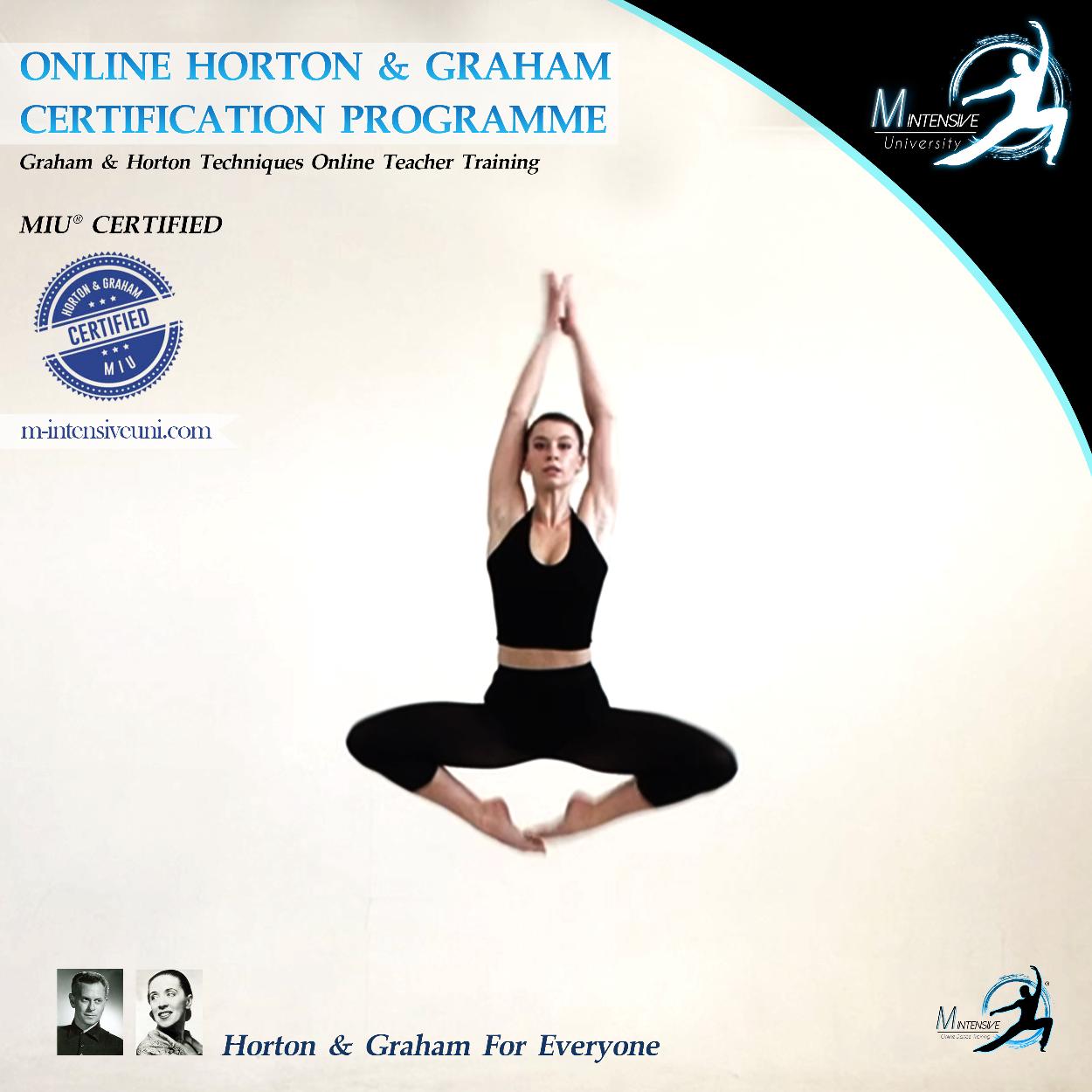 As the Graham Technique, a variety of ancestral dance and movement forms, including Afro-Caribbean, Indian, Balinese, and Javanese classical dances and Yoga, heavily influenced Lester Horton's movements. These influences gave him valuable insights into lines and shapes that have inspired the contemporary dance world ever since.
As the Graham Technique, a variety of ancestral dance and movement forms, including Afro-Caribbean, Indian, Balinese, and Javanese classical dances and Yoga, heavily influenced Lester Horton's movements. These influences gave him valuable insights into lines and shapes that have inspired the contemporary dance world ever since.
Lester Horton wished to create a method to train dancers for any dance style and succeeded beautifully! Nevertheless, his technique was supposed to have no distinctive style. He failed miserably in that! Haha!
Thankfully, it has become a recognisable dance form that cannot be mistaken for another genre, and that is why we love Horton!
Lester Horton's flawless and unique technique and fortifications are truly inspiring.
Learn more about our Certification Programme at MIU Here
The essentials
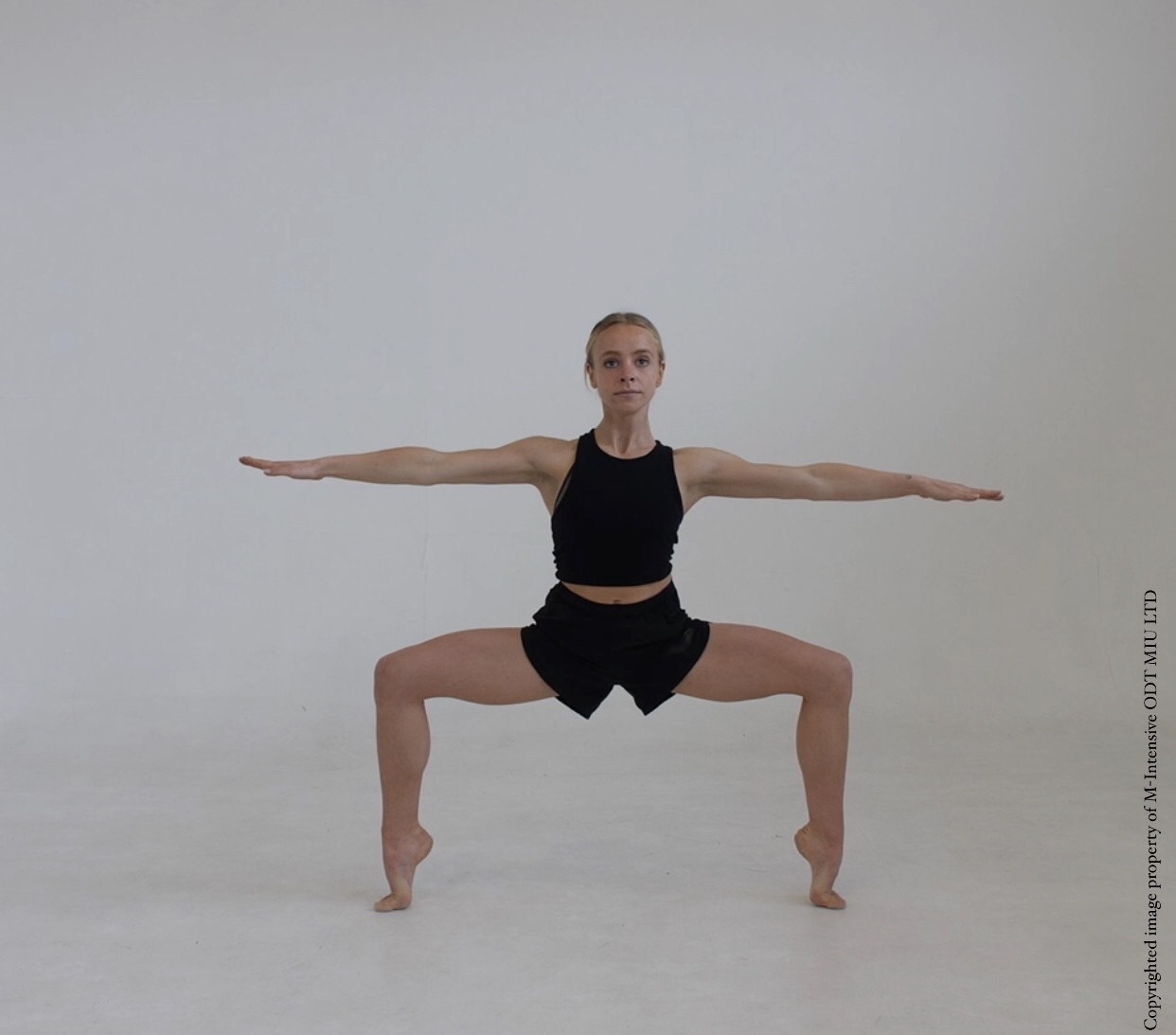 In this section, we will discuss the well-known Fortifications often taught in Horton technique classes. As an instructor, I believe it is crucial to teach the first four Fortifications to my students as a priority. These studies are essential to understanding the essence of the Horton technique.
In this section, we will discuss the well-known Fortifications often taught in Horton technique classes. As an instructor, I believe it is crucial to teach the first four Fortifications to my students as a priority. These studies are essential to understanding the essence of the Horton technique.
Some of the Fortifications require a higher technical level, so I would not recommend teaching them to beginners. By mastering these essential Fortifications, your students will have a better chance of studying at The Ailey School in New York City.
They will be able to join more advanced levels and absorb many challenging materials. Therefore, it is vital to prioritize teaching the first four Fortifications to your students.
Fortification #1
Purpose: Achilles tendon stretch study that also focuses on strengthening the ankles
Level: Inter/Adv
Level of difficulty: 3
The Famous Fortification #1! is one of the most complex Fortifications that requires both technique and flexibility. Lester Horton officially created it to stretch your Achilles. After many years of practice, I realized that it also considerably reinforces your ankles.
Although it is the first one on the list, this Fortification is not easy to perform due to the challenging parallel and turnout positions combined with a flat back forward. Laterals are also not easy to maintain. Therefore, it is not recommended for beginners.
You should introduce Fortification #1 once your students are comfortable executing Laterals with both arms in the traditional Horton warm-up and have developed a strong body centre.
This Fortification study is pretty precise, and I also noticed that it takes time for students to be fully confident with the counts. That is why I adjusted the counts in my practice to bring a bit more clarity to the learning process:
Perform the following dance moves in 12 counts, starting from the Flat Back forward position. First, move your arms back to reach your heel and Achilles tendon while counting 1-2-3-4. On count 5, perform the Lateral move, followed by Flat Back on count 6. Continue counting until you reach 12 while raising your torso to an erect position on relevé and keeping your arms in High Parallel on counts 6-7 and 8. On counts 9-10, face upstage in a natural 4th position, then lower your heels on count 11 and move your right foot forward to join your left foot on count 12. Finally, both feet should end in Parallel 1st.
You stay perfectly in music with this alternative.
Challenge: Legs position (front leg turned out, back leg parallel).
My tip: Repeat the first eight counts in the Flat Back forward position at the barre, ensuring the back leg is parallel.
* See M-Intensive University's Laterals video tutorial
Fortification #2
Purpose: Plie Study that strengthens feet
Level: Adv Beg, Inter, Adv
Level of difficulty: 2
I really enjoy Fortification #2. It's one of my favourites and a great study for beginners due to its clear structure and distinct footwork. It's quite unique and interesting, making it easier for students to remember. I usually introduce this study first, even though it's technical because it's still accessible to beginners.
It is indeed a plie study; nevertheless, your feet are deeply stimulated and strengthened, and it is so effective. My students genuinely find it beneficial. This Fortification also fully engages the entire torso and arms from the beginning until the end.
That's why I love doing this Fortification - it engages your entire body and produces visible results quickly. This is what sets the Fortification apart - it really works!
Challenge: Maintaining the arms in parallel second position for a long time.
My tip: Fully expand your arms while keeping your shoulder blades apart. Engage your core by using your abs to strengthen your entire torso.
Learn how to incorporate Fortification #2 in your class in our Online Horton Intermediate Class
Fortification #3
Purpose: Lateral Study
Level: Adv
Level of difficulty: 4
One of the hardest Fortifications. It requires flexibility, strength, and precision in every movement for advanced students only.
This lateral stretch study is a great exercise, and it is also quite physical!
Fortification #3 combines typical movements of the Horton vocabulary: laterals, Flat Back, Horizontal swings, Backbend, and isolations. Like Fortification #2, it has been slightly upgraded over time, and you will access the updated versions in M-Intensive University.
The study's biggest challenges are changing direction in the lateral position and counting. Check our tutorial below for more information.
Challenge: Change of direction in Lateral position; counts.
My tip: Maintain contact with the floor, slide smoothly by lifting heels, keep your torso low and in a lateral position, and hold your position to stay in the music.
Note about the head in the back bend: Depending on how far you go in your back bend in the study, you can either keep the focus in front of you or you can end up with the head and torso facing the ceiling if you are in a flat backbend. Both are permitted.
*See M-Intensive University's Fortification #3 tutorial
Fortification #4
Purpose: Lunge Study that strengthens the adductors
Level: Int, Adv
Level of difficulty: 3
Similar to Fortification #3, the counts in this fortification exercise are quite precise and can pose a challenge for some students. It is also a more extensive fortification routine, requiring a specific level of strength and may be difficult for some students to perform, particularly the deep side lunge sit.
With practice, it becomes manageable. I noticed significant improvements after a few weeks. This study will enhance your splits, deeply stretch your muscles, and strengthen your glutes and adductors.
Challenge: Ascent in the deep side lunge sit.
My tip: Repeat the ascent with a ballet barre; engage your glutes and adductors deeply.
Fortification #5
Purpose: Hip propulsion study that improves turnout
Level: Int, Adv
Level of difficulty: 2
My students adore this fortification! I completely understand why; it is striking, entertaining, and impressive. This brief study is actually very intense and necessitates excellent coordination to be performed efficiently.
I usually introduce it after Fortification #2 since it is on the floor, and it adds some excellent variety to the class. Similar to Fortification #2 and #3, you will learn the updated version at M-Intensive University. I really enjoy this Fortification because the movement is so unique!
The structure is designed to be fast-paced and precise. It is very specific in its approach.
Some students may face difficulties in maintaining proper posture and counts while performing. It is important to remember that there is a specific backbend that needs to be maintained throughout the performance, which is often overlooked. It is crucial to ensure that the head, neck, torso, leg, and footwork are coordinated and purposeful from the beginning to the end of the performance.
Fortification #5 is beloved for various reasons due to Lester Horton's brilliant choreography. What a genius!
Challenge: Get in the primary position in only two counts at the beginning.
My tip: All is in the counts: " 1 and 2".
- 1: Move your right hip
- and Circle arm down to the end (Head focus on the right hand in backbend position)
- 2: Get in the position with your left foot flexed from the start.
Join us on Instagram at @m_intensive_odt; we have shared a nice trailer of Fortification #5 on our page
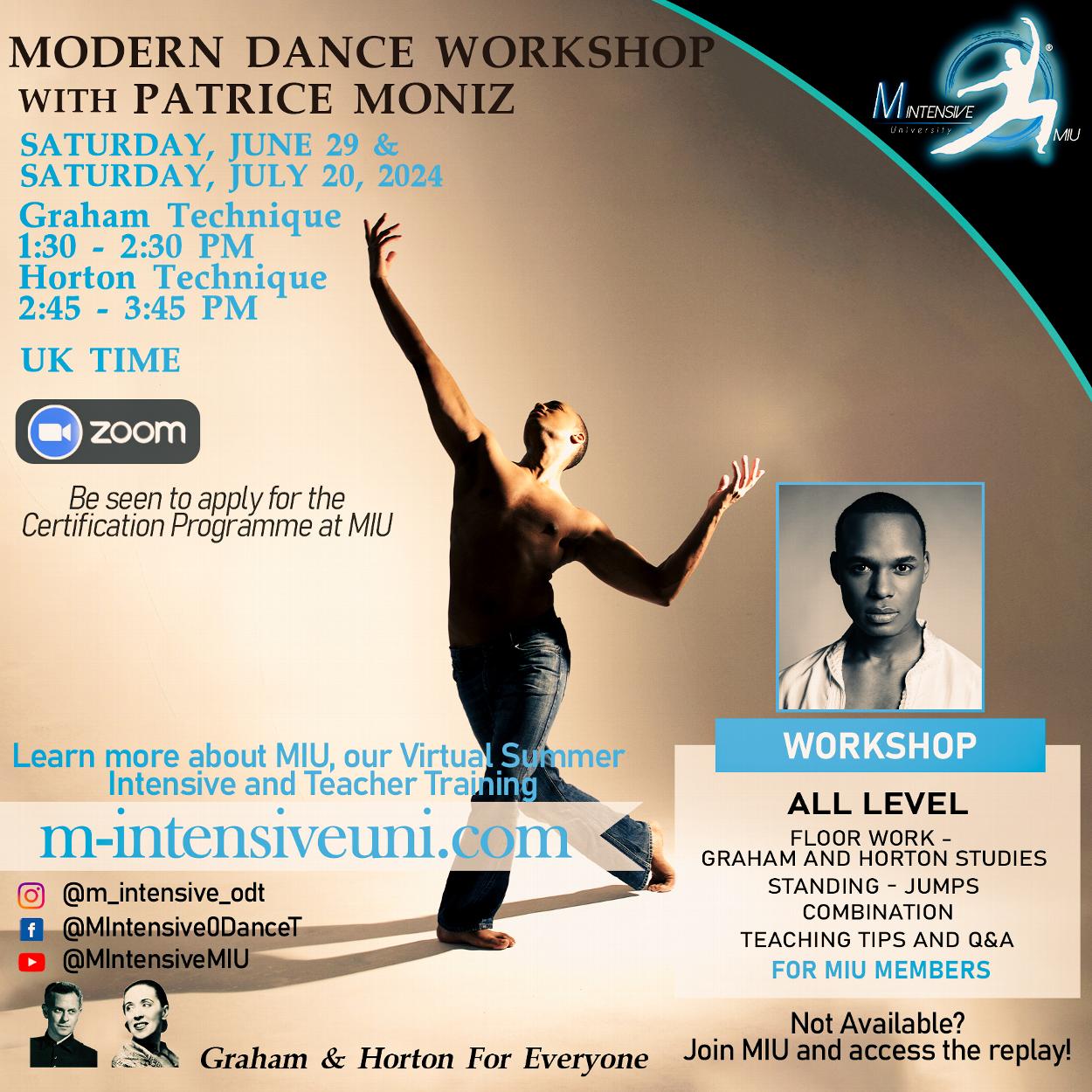
Join our Founder and Director, Patrice Moniz
Have Fun and apply for the Certification Programme
Patrice will be leading online workshops before our Virtual Summer Intensive.
>> It is accessible to MIU members, and prospective students can join if they wish to be considered for our Teacher Training in the Certification Programme.
>> Or submit a video application following our guidelines.
If You wish to attend one of these sessions:
Please contact info@m-intensive.co.uk with your name and information about the Certification you are interested in to book your spot. Participants will attend one of these workshops instead of submitting a video application. These sessions will consist of regular classes to demonstrate your understanding of the method you wish to teach.
Join Our Community Member Area Access
Fortification #6
Purpose: Abdominal study
Level: Int, Adv
Level of difficulty: 3
What a tremendous abdominal Fortification! This move is an introduction to the Pieta position featured in Alvin Ailey's famous ballet, Revelations.
This exercise requires strength, control, and flexibility while also working your core.
Your students should be able to memorize the study quickly, as it is pretty straightforward. However, some students may find it difficult due to the sitting position, which puts pressure on the coccyx. Not everyone may be able to physically endure it. In such a case, I recommend placing the hands on the floor until the core is stronger to compensate for the challenging sitting position.
You can introduce the Coccyx Balance exercise before performing the complex and physically demanding Pieta position. It will help you warm up your neck correctly and avoid unnecessary strain.
Challenge: Touching the floor with the head on count four while in Pieta's position.
My tip: Make sure to keep your arms in the opposite direction while spiralling towards the floor with your head. It should feel like someone is pulling your arms while you perform the movement.
Need to know all about the Horton Fortifications? Discover your Lifetime Package at the end of this blog!
The Dramatics
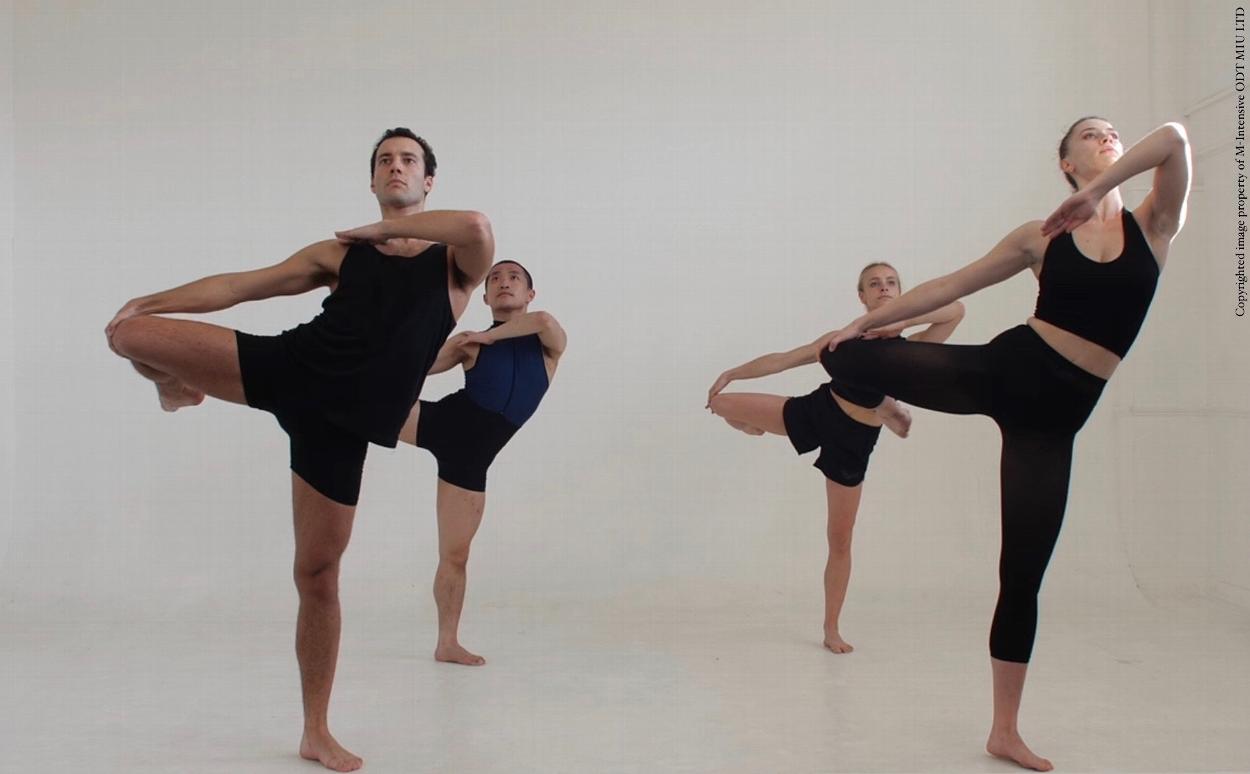 Lester Horton was a dancer who loved technique and drama. The Fortifications are a set of technical and expressive dance movements.
Lester Horton was a dancer who loved technique and drama. The Fortifications are a set of technical and expressive dance movements.
When performing these exercises, dancers experience a journey that involves falls, long balances, intense stretching, and fast-paced rises and falls.
These are some of the most exciting and challenging fortifications on the list, but they can also be a lot of fun!
Fortification #7
Purpose: Dramatic tension and lateral study
Level: Int, Adv
Level of difficulty: 3
The tension in this study is palpable and immediate; something is happening internally.
This workout routine is designed to gently challenge you and push you beyond your limits. The lateral exercises are particularly challenging in the seated position and will work your muscles intensely—you need to try it to feel it.
I noticed we get confused about pointing the foot after the 3x2s (with arch and curves). When should we point our foot again? On count 3, at the same time as the torso faces downstage.
Challenge: Lateral stretch; descent before the transition at the end.
My tip: Use all the counts during the lateral stretch. As you descend, engage your core muscles to support the lower back.
* See M-Intensive University's Fortification #7 video tutorial to fully understand the process
Fortification #8
Purpose: Hinge study, deep core work
Level: Adv
Level of difficulty: 5
"Which Fortification is the most difficult?" - You might have been wondering about this. Well, voilà!
Fortification #8 is genuinely something; trust me, although it looks fine, IT IS NOT! Oh my. Make sure to be fully warmed up before performing it.
This study is quite challenging because of the need to maintain the hinge position for long periods. It requires the engagement of your core, back, glutes, quads, feet, and arms, which makes it a highly intense physical activity. Moreover, this fortification is quite lengthy and demands great endurance.
Lester Horton was an exacting choreographer who expected a lot from his dancers. The Fortification sequence is a prime example of how physically demanding the Horton technique can be. Practising this technique will help you develop pure strength and control, which is particularly useful for floor work. It's not surprising to see rapid results from this technique, as it works your body intensely.
Challenge: Maintain the hinge position and ascend during the last phase.
My tip: For better results with this Fortification, repeat phase 1 several times to build more strength and resistance in your quads. Additionally, Hinge Study 1 serves as excellent preparation for this Fortification.
Fortification #9
Purpose: Front and box splits stretch
Level: Int, Adv
Level of difficulty: 4
Fortification #9" is an excellent study that can help you increase your movement range while also improving your flexibility and strength. This study utilizes a smart combination of movement and stretching to deliver optimal results, which will leave you feeling stretched and invigorated.
Initially, this exercise may seem challenging and not easily achievable by all students due to the high level of flexibility required to perform the essential elements of the study. However, this exercise is highly effective, and you may not even realize your limitations. The repetitive movement in and out of the triangle position helps considerably and genuinely stretches you without causing any pain. After a few sessions, you will be surprised at how accessible it can be to go from a front split to a box split.
Lester Horton's incredible understanding of human anatomy is brilliantly demonstrated in Fortification #9. The human body is truly amazing and capable of exceeding our expectations. Fortification #9 is an essential resource for any dancer who wants to improve their flexibility and strength.
Challenge: Transitioning between box and front splits.
My tip: To prepare yourself properly before performing, it's important to warm up beforehand. Stand facing stage right in a triangle position and practice the transition in a slower tempo a few times (4 counts in the study). Alternate on each side: triangle position, front split, box split, and then reverse to face the other side. It's easier to focus on getting "in and out" of the triangle position rather than focusing on the splits themselves.
* See M-Intensive University's Fortifications #5; #7; #9 videos tutorials
Fortification #10
Purpose: Front fall study
Level: Adv Beg, Int, Adv
Level of difficulty: 3
What a beautiful and poetic study! Fortification #10 will introduce the front fall. This method is perfect for approaching the floor work with confidence and control while remaining graceful.
This fortification is both percussive and lyrical, creating perfect harmony. It is one of my favourite studies. It is original, fun, and an excellent exercise for coordination.
In the tutorial, you may observe that the front fall is executed on the right side on both sides of the study. It is important to remember to switch legs in the triangle position, which should generally be done on both the right and left sides before performing the front falls.
Enjoy!
Challenge: Deep Hinge position; backbend before the front fall.
My tip: Stay as low as you can in the Hinge position to facilitate the backbend; make sure to slide the side of the right hand on the floor in the front falls.
Fortification #11
Purpose: Basic rise and fall study
Level: Int+, Adv
Level of difficulty: 4
What a great Fortification! Demanding and fast-paced, Fortification #11 seems like the most challenging study at first. In reality, even though quite physical, the study is not as difficult as we think. It is fast and intense, but this unique construction and motion make it very enjoyable to perform.
This Fortification is the perfect example of the method's Afro-Caribbean influence. The repetitive motion of the lateral fall induces a trance-like state, boosting confidence and adrenaline for swift execution.
To tackle Fortification effectively, an advanced student should have already mastered Primitive Squats, Flat Backs Forward, and Laterals. This allows them to maintain the positions effortlessly, even at full speed. Once the technique is fully understood, it becomes ingrained in muscle memory, and the movements can be executed almost automatically.
This trance state genuinely pushes you beyond your limits. Fortification is so fun; my students adore it - as do I! Don't be impressed by its virtuosity; it is doable.
Challenge: Reach the different positions on one count; change directions throughout the study.
My tip: Consistently engage your core before getting into position on count 1, anticipating each movement with "and 1" in your head.
Join us on YouTube at M-Intensive MIU; we have shared a nice trailer of Fortification #11
Fortification #12
Purpose: Elementary Balance and extension study
Level: Int, Adv
Level of difficulty: 3
This is a brief and effective workout that demands significant training and body control. The impressive fortification is ideal for enhancing extension, strength, and posture. It is also an excellent exercise for fortifying the ankles and sharpening the mind.
The choreography is beautiful and enjoyable, and it's quite emotional at certain moments.
Artistry is integral to the Lester Horton technique, and freedom of expression is present even in Fortifications, which are ultimately dance movements.
Fortification #12 is a masterfully crafted adagio, seamlessly blending technique, precision, and artistry.
Challenge: Quarter turn on releve arabesque.
Mt tip: Repeat phases 4-2 and 5-2 facing the barre, three times on each side, a few times.
Fortification #13
Purpose: Table and Lateral T Balance study
Level: Adv
Level of difficulty: 5
Fortification #13" wears its number for a good reason; it is all black or white; either you get it right or you don't! You will be lucky on certain days and not as much on others, haha.
One of the hardest Fortifications on the list, it requires long balances to sustain after a complex combination of Arabesque, Lateral T and jumps.
This remarkable fortification requires concentration and technical expertise. Ultimately, it is a fascinating subject, and your students will relish the challenge!
Challenge: Long balance in table position after performing the entire study.
My tip: Start in table position with the standing leg turned out like a Lateral T, then adjust slightly for the developpe a la seconde.
Fortification #14
Purpose: Dimensional turn preparation and space awareness study
Level: Beg, Int, Adv
Level of difficulty: 1
What a fun fortification! This exercise prepares you to turn with control and precision.
This study provides a great chance to encourage friendly interactions among students while improving concentration. The ultimate challenge in Fortification #14 is to remain focused, stimulated, and challenged at all times. A single misstep can cause the entire Fortification to fail.
There are multiple formations that can be used while performing the Fortification, allowing for a variety of options.
It is a pleasant subject to learn, especially for beginners, as it is quite easy to understand. As I stated earlier, you can choose to teach the subject of fortifications whenever you feel it is appropriate, and for that reason, #14 could be one of the first topics you cover.
Challenge: Following the structure meticulously while changing directions
My tip: Before each turn, position your spot and add half-turn hips to prepare efficiently for the final phase, keeping in mind that the back initiates the movement.
The Forgotten
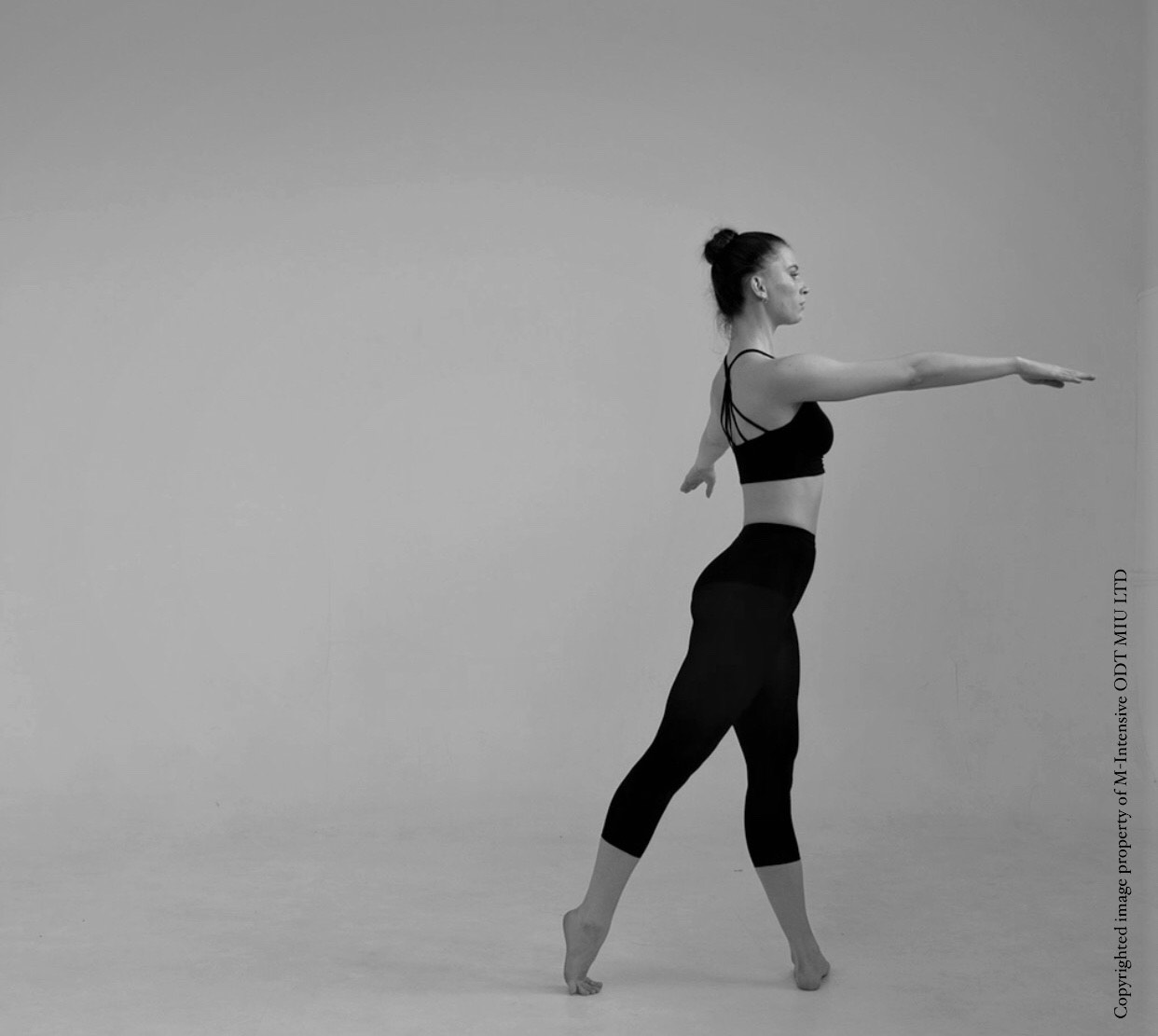 We are now talking about the last fortifications, which I refer to as 'the forgotten fortifications,' haha.
We are now talking about the last fortifications, which I refer to as 'the forgotten fortifications,' haha.
I have noticed that Horton classes do not often include the teaching of rare fortifications, which is a shame as they are both fierce and memorable. Personally, I enjoy the challenge of teaching these fortifications to my students and encourage them to experiment and give them a try. I believe they are lovely studies as well.
Fortification #15
Purpose: Elevation preparation that warms up calves
Level: Beg, Int, Adv
Level of difficulty: 1
Fortification #15 is a brief lesson that concentrates on warming up the calves, which is an ideal preparation for elevation and small jumps across the floor. It is one of the most accessible Fortifications and will prepare you for the next study on the list.
Despite not being widely known or frequently used, it is an important study because jumps are a crucial component of the Horton technique vocabulary.
Challenge: Maintaining the back leg parallel.
My tip: Repeat the first counts at the barre, ensuring you keep your back leg parallel by engaging your hip flexors throughout the movement.
Fortification #16
Purpose: Elevation and big jump preparation
Level: Adv Beg, Int, Adv
Level of difficulty: 2
This study aims to achieve the same goal as Fortification #15 but in a more intense and forceful manner. Though it is a brief fortification, it requires great stamina and endurance and can be physical.
This exercise can be tremendously helpful in preparing you for big jumps quickly and effectively!
Challenge: Fast-paced and repetitive percussive jumps.
My tip: To perform the exercise, stand straight and jump up while twisting your body to land facing the opposite direction. While doing so, tighten your abdominal muscles to engage your core.
Fortification #17
Purpose: Isolations study that improves coordination and concentration
Level: Int, Adv
Level of difficulty: 5
This fantastic fortification is the last but not the least. Indeed, it is one of the most complex fortifications, perhaps one of the reasons why it is not often taught.
This is a complicated study that requires attention to detail and precise counting. It may take some time to master it perfectly. Although it may seem simple at first glance, the Fortification technique actually demands great focus and extensive practice.
Repeating tricky hand and foot gestures throughout the study will improve coordination.
Then the study ends with traditional Horton positions back to back, on relevé, and a long balance of 6 counts on top of that! Fortification #17 is impressive. Lester Horton was an inspiring individual who was ahead of his time in terms of his ideas and contributions.
It is like playing chess. It is a brilliant game that requires lots of concentration, calmness, and patience. For all these reasons, you will be delighted to know that fortification.
It is an absolute masterpiece, the cherry on the cake, and it is rewarding.
Challenge: Coordination, precision, and isolations with precise counts.
My tip: Repeat, repeat, repeat! Count diligently and transition sharply.
I am glad you now have some knowledge about the Horton Fortifications. As a writer, I'm thrilled to have provided unique insights that are valuable to both dance instructors and dancers. Before concluding this blog post, I'd like to include a special note for any experienced Horton teachers or those who plan to become one:
Teaching such a technique is an honour and a blessing, but it is not an easy path. You may feel frustrated and overwhelmed at times. You may question whether you are ready or if you are doing things correctly. You might even doubt yourself or take a break, as I did. Teaching is a demanding job, that's just the reality.
I have taken many Horton lessons during my career and have taught hundreds of classes. One thing I can assure you of is that none of my mentors or colleagues teach in the same way. Every individual is unique and teaches Horton differently, which is fantastic. Some teachers prefer certain arm positions while others prefer different ones, and that's okay! Everyone has the freedom to experiment, try things out, find their own voice, and follow what they believe in.
This advice encourages trusting your intuition and pursuing your passion for teaching the Horton technique in order to stay ahead.
In the end, we all share the same values and principles as Lester Horton, following one unique heritage.
As long as you keep that in your heart, you will never go wrong.
The Lester Horton Technique in 17 Fortifications
Buy your Lifetime Collection today
Master The Fortifications and Teach Confidently
Learn the Horton Fortifications with precise counts, demonstration and music with our Lifetime collection of 35 online course videos.
Acquire a solid knowledge of the Horton studies with our unique and detailed sessions.
Full Series of 35 Online Course Videos
Level: Beg, Inter and Adv Studies
Duration: 1 hour 54 mins
Buy The Lifetime Package
Or Rent for 30 days
- Fortifications #1 to #17
- + 17 Follow-along videos
- + BONUS: The 17 Fortifications in 16 Transitions with counts and demonstration from The Horton Library Sessions MIU
The Horton technique in 17 Fortifications
 The Fortifications are pillars of the Lester Horton technique and significantly represent his brilliant and invaluable contribution to contemporary dance.
The Fortifications are pillars of the Lester Horton technique and significantly represent his brilliant and invaluable contribution to contemporary dance.
Knowing the Horton Fortifications will open many doors for your students, especially in this day and age when such modern dance fundamentals are not easily available.
Lester Horton's life was fulfilled by his creation of a method that strengthened the body for dancing and beyond. His success has left a lasting legacy that continues to inspire and uplift others.
In MIU, you will study the 17 fortifications and access all the resources you need to master the Horton technique and its studies successfully. If you are ready to become a member, click here
Remember, it takes time and patience. MIU will guide you and stay by your side for as long as necessary.
I dedicate this article to you, Lester Horton. Forever grateful for your incredible expertise and genius. Thank you for the timeless gift that keeps you right here with us.
Thank you so much for everything.
Thank you for reading; please share this with your friends and family!
Bonus! Get Your Free Dance With MIU
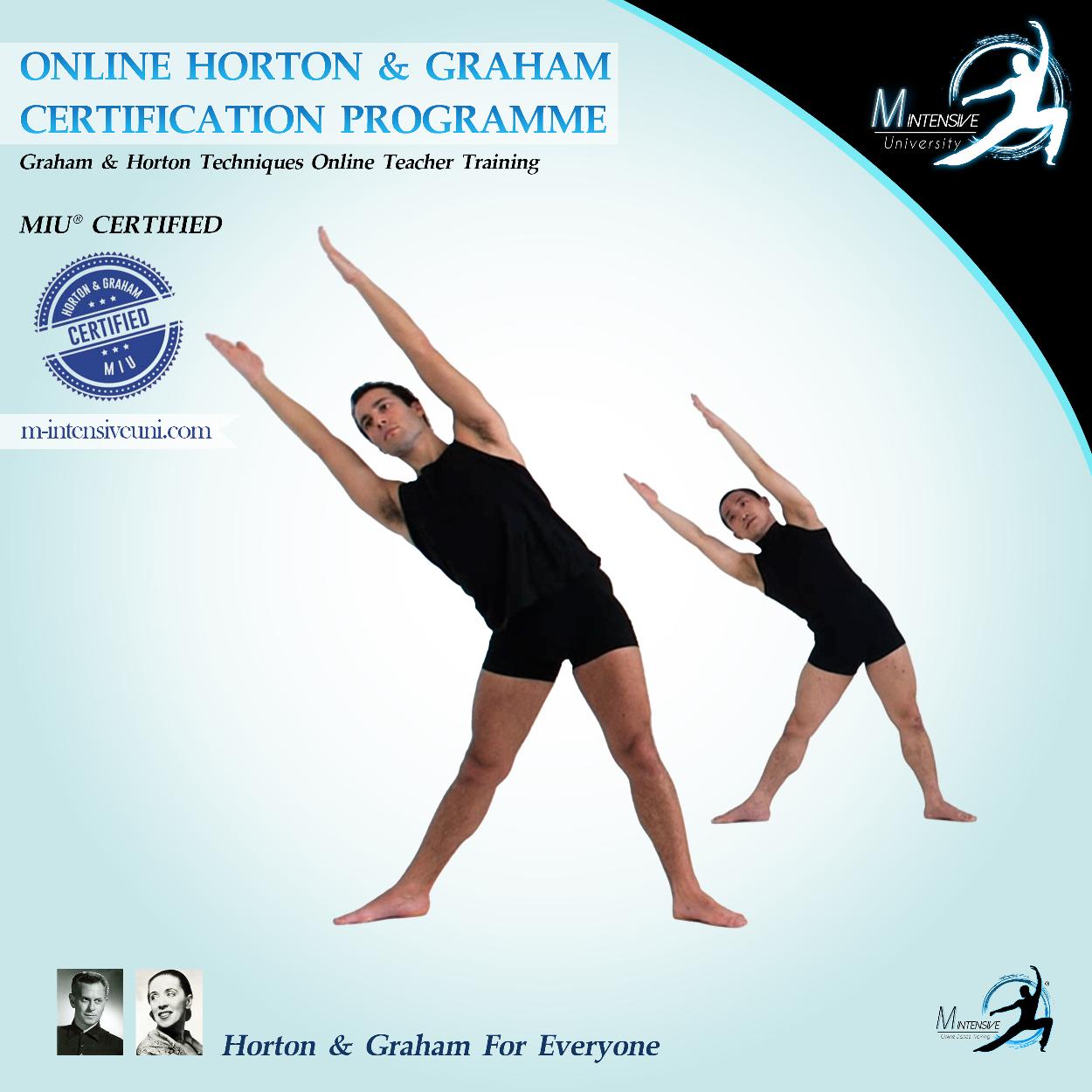
Horton & Graham Certification at MIU
Make this the year to get serious and focused on teaching The Graham and Horton Techniques. With The M-Intensive University membership, we give you the tools, support, and resources you need to boost your Horton and Graham skills to inspire your students to become the best dancers they can be.
Next on A Safe Place To Be:
What Do Dancers Think About Social Media?
The Ultimate Guide to a Complete Makeover
Live a happy, healthy, and dancy life in 14 easy steps!
Interview: A Dancer's Life, The Story of Don Prosch
The real-life of a Dancer - And how to deal with it like a Pro
Free yourself from your biggest addiction: Sugar!
The New Dance Teacher's Guideline for Success
How to stay motivated? The Art of Visualisation!
11 reasons why you shouldn't skip ballet
The best dance application in 8 easy steps
Disclaimer: All content provided on M-Intensive.co.uk is for informational purposes only. The owner of this blog makes no representations of the accuracy or completeness of any information on this site or found by following any link on this site. The owner will not be liable for any errors or omissions in this information nor for the availability of this information. The owner will not be liable for any losses, injuries, or damages from the display or use of this information. These terms and conditions of use are subject to change at any time and without notice.

